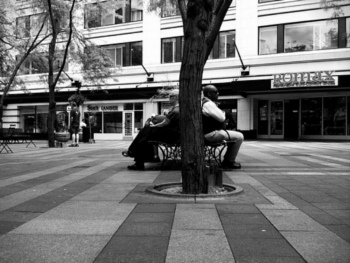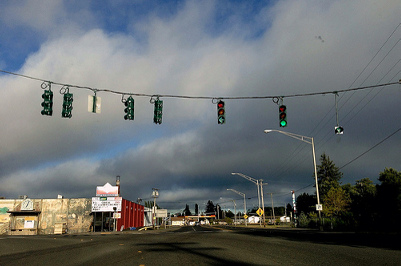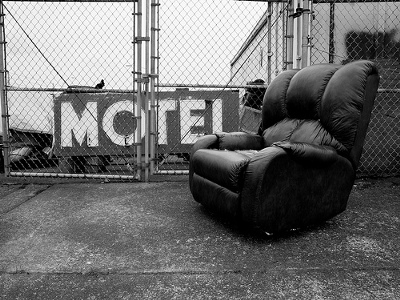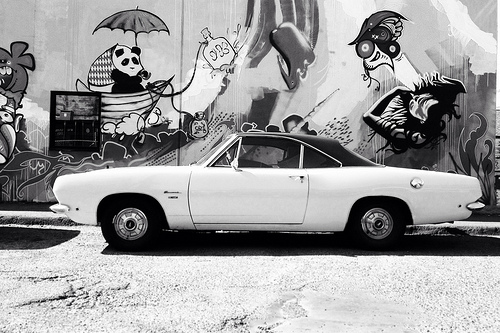In a closed series our RooM Connectors have interviewed the most established and promising photography talent globally.
It's an insta_view of some of the best talent in the World. Enjoy.
Star Rush
02/10/2013 http://www.flickr.com/photos/star_rush360/by marianne@roomtheagency.com
Seattle based Star is one of the original advocates and pioneers of mobile photography. She currently teaches writing and literature part time at Cornish College of the Arts and runs her own photography business: Star Rush Photography. In addition, she previously co–founded Lysfoto, the Mobile Photo Group and is a member of IDEA Odyssey Artist Cooperative & Gallery whilst also contributing to mobile sites such as wearejuxt. Whether she's writing, teaching or taking pictures, she always has something valuable to say.
“Images are quite the capital these days”

Mobile photography has inspired a whole new generation to take up photography. Obviously the accessibility and pricing of mobile devices and apps plus the increase in visual social networks are a big factor, but do you believe it’s positive for photography and that it perhaps even makes people more creative?
Mobile photography is a phenomena to be reckoned with and better understood. I would say, yes, it’s brought many to communicate with images, for good and bad. However, that’s not to be misunderstood as bringing people to photography as its conventionally understood. By this, I mean the smartphone’s camera makes capture/edit/share accessible and ubiquitous for some of the reasons you note in your question. It’s facilitated communication via images but not all of those images are “photographic” to me, in that they lack aesthetic or narrative power or even intention on the part of the user to say something in addition to the literal. The images may communicate, but I’m curious about what they communicate, to whom, and for what purpose. Certainly more of something need not equate with that something being meaningful, insightful or beautiful. Mobile image-making and communication, though, is affecting our visual culture and means of communication, most certainly.
I don’t think devices make people more or less creative. However, when devices are accessible and fun, they do stir in us the impulse to express ourselves via the device at hand, a desire to create. That desire is an intrinsic quality of human beings, a desire to communicate the condition of our being. When the means aren’t there, the desire rests dormant, but it is there awaiting an environment that stirs, provokes, nourishes. The mobile photography space is an entire ecosystem of sorts or an ethos, rather than simply defined by a device one uses--smartphone--or otherwise. Certainly, in the end, the products produced may resemble a conventional DSLR photo or digital art. I think it is the process of creating that product that is different, which mobile photography brings to the long, established scene of photography.
One app that you’re no longer involved with is Instagram as you quit last year when they first tried to enforce their new Terms of Service. Obviously that decision looks sensible in light of the in depth report by the ASMP this week which highlights some pretty scary terms. What are your thoughts on Instagram now - do you feel that they’ve let their community down and do you envisage them being able to get people like yourself back onboard?
I’ve not been on Instagram for nearly a year, and I don’t miss it, either personally or creatively. The ToS rollout in January 2012 was the trigger for quitting but not the sole reason. I wasn’t entirely satisfied with the space from a creative standpoint or a communicative one. I originally migrated some of photography there because many of my colleagues were moving from Flickr to Instagram in 2011, I had wanted to keep up with the “conversation.”
Each IG user has to make up his or her own mind about what is wanted from participation in the network: why be there, what is to be gained, how do use it, what one’s willing to exchange for such use. This is true for any social media participation, actually. Images are quite the capital these days in the mobile space, the tasks of data accumulation and intense grab for attention.
Instagram is the little app that could. It’s a brand people outside of visual art and photography recognize, if they know nothing else about mobile photo or art. But Instagram is not mainly a photographic medium; it’s an image-centric version of twitter or other micro-network. It’s pulled its success from this distinction, frankly, and built a tremendous user base and stirred a cultural zeitgeist. So successful has IG been that for many the entire concept of “mobile photography and art” IS Instagram, the brand having become a synonym for the creative and communicative space of a genre, and in some cases, a sub-community of artists and photographers. That’s of course incorrect and kind of sad to me, because there’s a lot going on outside that particular app. If you believe the mobile space begins and ends in Instagram, you’re operating under a misconception and missing out on a wider world.
Communities are composed of people; everyone contributes or takes away what they most want or need. A company is a company to make money, I guest that, but I’m quite purposeful about choosing to affiliate myself or my photography with companies or individuals whose values are aligned with my own. I’m content doing my thing outside IG. I’m not migrating back anytime soon.

Which of the major photographic social media platforms and communities do you use and what it is about each of them that particularly appeals to you?
I share my photography on Flickr, EyeEm, and Google+. I’ve been with Flickr for several years, even as it was fumbling with mobile space development.
I like the fact that on Flickr and Google+ communities build around all kinds of interesting subjects, from cameras to media, to a variety of others. I like how I can indulge my interest in other platforms of photography, such medium format, 35mm film, rangefinders, and so forth. I do shoot in other platforms, so it’s a plus for me. Each upgrade to its mobile app just keeps getting better, too. I know there was backlash about Yahoo’s altering of the various plans, the pro-status and so forth. It didn’t bother me, so I stayed. I also use Flickr as the engine for my photo blog.
Contrary to media reports, Google+ is a busy and informative site for photographers. I like how my images/posts look there, how the activity links up with Google search/rankings. Most of my professional networking has been on G+ more than any other site, excluding Flickr, which has also been very good. Like Flickr, I like how the G+ photographic community is diverse and broad-based when it comes to platforms and communities. I do my mobile thing, and I can keep up or contribute to communities in conventional mediums I am interested in. G+ hangouts are fabulous.
Since leaving Instagram, EyeEm has become my sole mobile sharing community. This is because I appreciate the company’s mission, the close involvement of the company’s team in building communities, being focused on photography from the get-go (pre Instagram days), and the accessibility users to the team and each other. Things have changed a bit since EyeEm has grown its user base, but the company is sensitive to the impact grown has upon spamming, branding, etc., that can take over the network. I appreciate that as a user, a lot.
At the end of the day, it’s the users who define a photographic community, so I like those I engage with who are in the communities I contribute to and learn from.
“I dwell in monochrome so often; searching for the grays”

Last April, you & Jennifer Inslee set up Lysfoto, an online magazine about connected photography, but you’ve suspended operations and are taking a “hiatus”. Can you tell us a little bit about the reasoning behind that as it is a popular and well respected site within the mobile community.
It’s good to learn that Lys Foto has been a popular and well-respected site within the mobile community. We worked on the project for a year and had a fabulous time curating and promoting artists & photographers across iOS, Android, and Win platforms. I drove the decision to suspend operations for practical reasons. I noticed during the year that I was spending less time taking photographs and developing/challenging myself as a photographer, because I poured my creative energy into the site (and my teaching). After taking a long look at my creative goals, I’ve come to realize they are not so much to be realized in curation as much as in creating images. I want to free-up creative mindshare for me to apply to my long-dormant freelance photography business, Star Rush Photography (starrush.net), which is not solely mobile focused but does include photographic projects, workshops, and speaking engagements on the subject of mobile photography and art.
Henri Cartier-Bresson said “of course it’s all luck” which is true to a degree since anyone can be in the right place at the right time and end up taking an amazing photograph, but what do you think makes someone a genuinely good photographer?
I think luck is made as well. One has a hand at making such luck by being present in the moment, aware of her place in the world as the events/people/phenomena transpire around her, knowing well the camera she uses. Those who are not as mindful or aware miss oportunities, are blind to the luck before them. One can construct that as being unlucky, I suppose.
So, a genuinely good photographer can create those lucky moments. By this I mean, they have in them the ability to take good photos again and again, and they are not afraid or ashamed of the many bad photos they take on the way to a good one. They have more in them than a single photograph. In the end, a good photographer is really a mindful, sensitive observer of the world around her: the people she passes, the events that surround her, the actions that transpire, the questions that concern her. These aren’t just the grand moments of living, but the quiet ones, the small gestures, the mundane elements of being human in isolation and in the company of others. These are aptitudes that all creatives have, regardless of medium. The photographer, though, has a camera of some sort with her at all times. Her collaborators are light and time. Tools can change and tools can enhance the product but the tool is a means of expression. It is not, for me, the expression. Photography is her medium to express what others do with brushes, words, or movement. Lastly, a good photographer is an outcome of creative practices; it is a label applied by others to describe perhaps her eye or her work. It is not a label a photographer applies to herself. She instead just takes photos because it is what she does, what she must do to express her self. No matter the outcome, she takes those photos. She cannot stop, regardless of praise or criticism.
You’re a black and white documentary photographer, born in Saigon but raised in the USA. Do you think that influences your photography (and other creative outlets) and what does photography mean to you on a personal and professional level?
My identity influences my photography, as it does my writing via subject matter, point of view, perspective, even the questions I ask. What I see is a result of who I am. So long as I’m operating a camera, I don’t think my images are neutral. I’ve only this year become a U.S. citizen, after having lived here for more than 40 years. It took me a long time to commit my national identity to my long-established cultural one. Sometimes, I can see that curiosity about culture and place in my work.
I learned to speak English when I was nearly 5 years-old; I also was discouraged from continuing to speak Vietnamese as a child. So I barely have an intimate first-language when it comes to verbal expression. So, for me photography serves as a kind of first language, the language that I feel most permits me to share what I think and what I feel in all of their varied nuance. This is true for me when working on personal projects or commercial ones that involve realizing my own vision or that of a client. I struggle with finding English words; I’m free and relieved when I can take a photograph to say what I want to say.
I’ve appreciated artists who bring an outsider’s eye to their subject matter, as it’s a condition I have felt for most of my life. I’m biracial and bicultural. I travel a liminal space in terms of identity, and I think this is a space & curiosity being explored in my photography, particularly in work that probes an “Americana” theme or what it means to belong or not belong, to remember a past that is cultural prevalent but maybe personally obscure. It’s sometimes why I dwell in monochrome so often; searching for the grays. Sometimes I’m conscious of an underlying theme in particular photographs, other times I am not until I see the work after some distance away.

This insta_view can be republished but it must credit RooM the Agency and link directly to the source.

